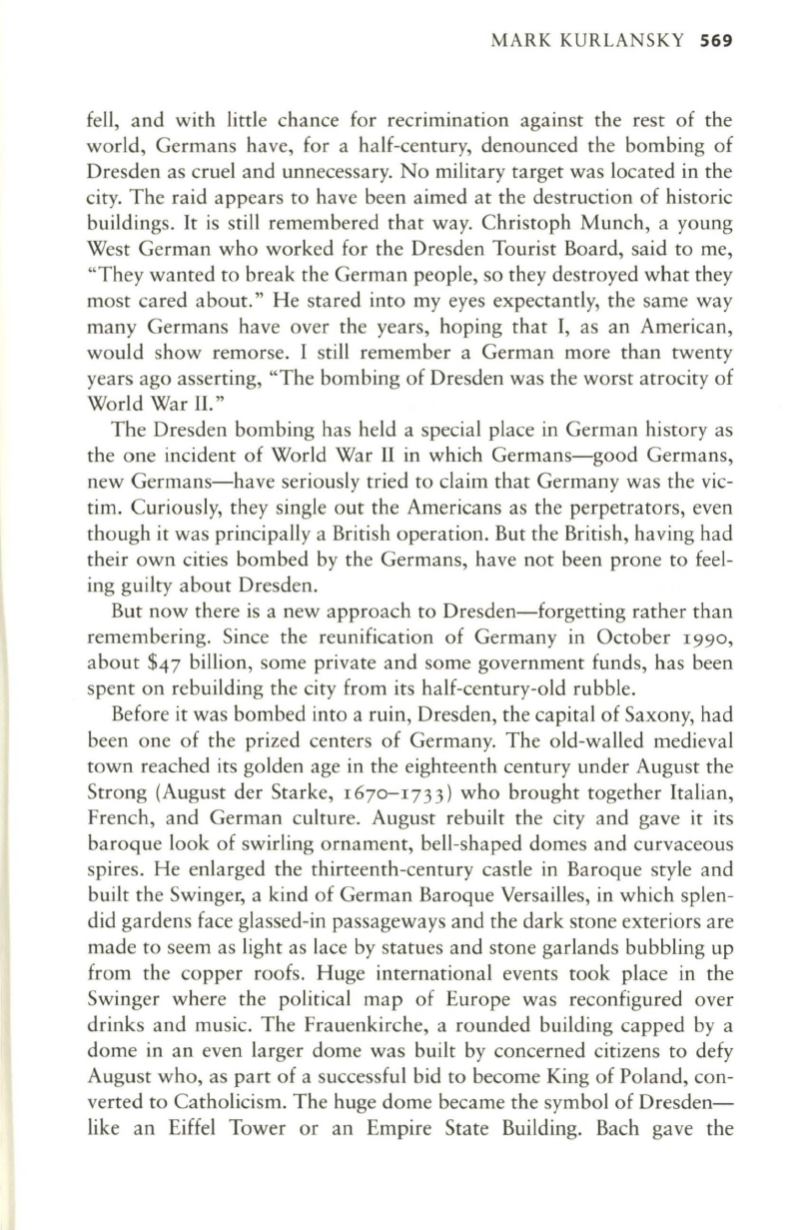
MARK KURLANSKY
569
fell, and with little chance for recrImmation against the rest of the
world, Germans have, for a half-century, denounced the bombing of
Dresden as cruel and unnecessary. No military target was located in the
city. The raid appears to have been aimed at the destruction of historic
buildings . It is still remembered that way. Christoph Munch, a young
West German who worked for the Dresden Tourist Board, said to me,
"They wanted to break the German people, so they destroyed what they
most cared about." He stared into my eyes expectantly, the same way
many Germans have over the years, hoping that I, as an American,
would show remorse. I still remember a German more than twenty
years ago asserting, "The bombing of Dresden was the worst atrocity of
World War II."
The Dresden bombing has held a special place in German history as
the one incident of World War II in which Germans-good Germans,
new Germans-have seriously tried to claim that Germany was the vic–
tim. Curiously, they single out the Americans as the perpetrators, even
though it was principally a British operation. But the British, having had
their own cities bombed by the Germans, have not been prone to feel–
ing guilty about Dresden.
But now there is a new approach to Dresden-forgetting rather than
remembering. Since the reunification of Germany in October
1990,
about
$47
billion, some private and some government funds, has been
spent on rebuilding the city from its half-century-old rubble.
Before it was bombed into a ruin, Dresden, the capital of Saxony, had
been one of the prized centers of Germany. The old-walled medieval
town reached its golden age in the eighteenth century under August the
Strong (August der Starke,
1670-1 733)
who brought together Italian,
French, and German culture. August rebuilt the city and gave it its
baroque look of swirling ornament, bell-shaped domes and curvaceous
spires. He enlarged the thirteenth-century castle in Baroque style and
built the Swinger, a kind of German Baroque Versailles, in which splen–
did gardens face glassed-in passageways and the dark stone exteriors are
made to seem as light as lace by statues and stone garlands bubbling up
from the copper roofs. Huge international events took place in the
Swinger where the political map of Europe was reconfigured over
drinks and music. The Frauenkirche, a rounded building capped by a
dome in an even larger dome was built by concerned citizens to defy
August who, as part of a successful bid to become King of Poland, con–
verted to Catholicism. The huge dome became the symbol of Dresden–
like an Eiffel Tower or an Empire State Building. Bach gave the


